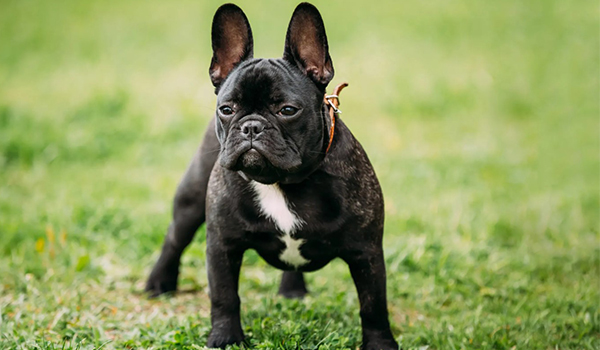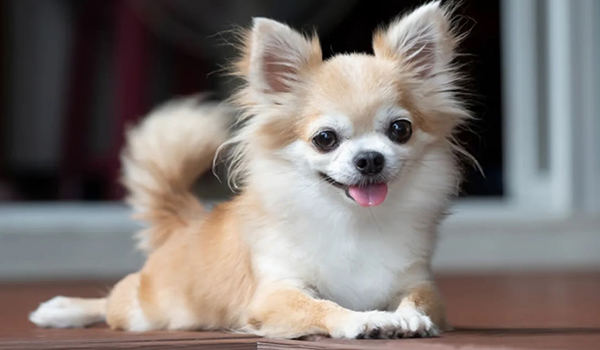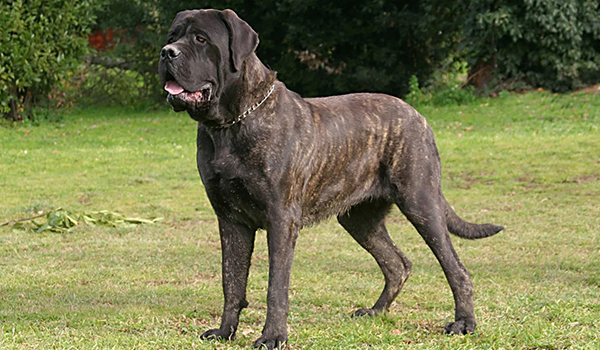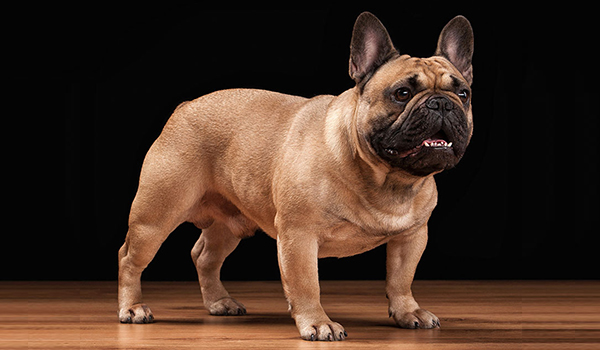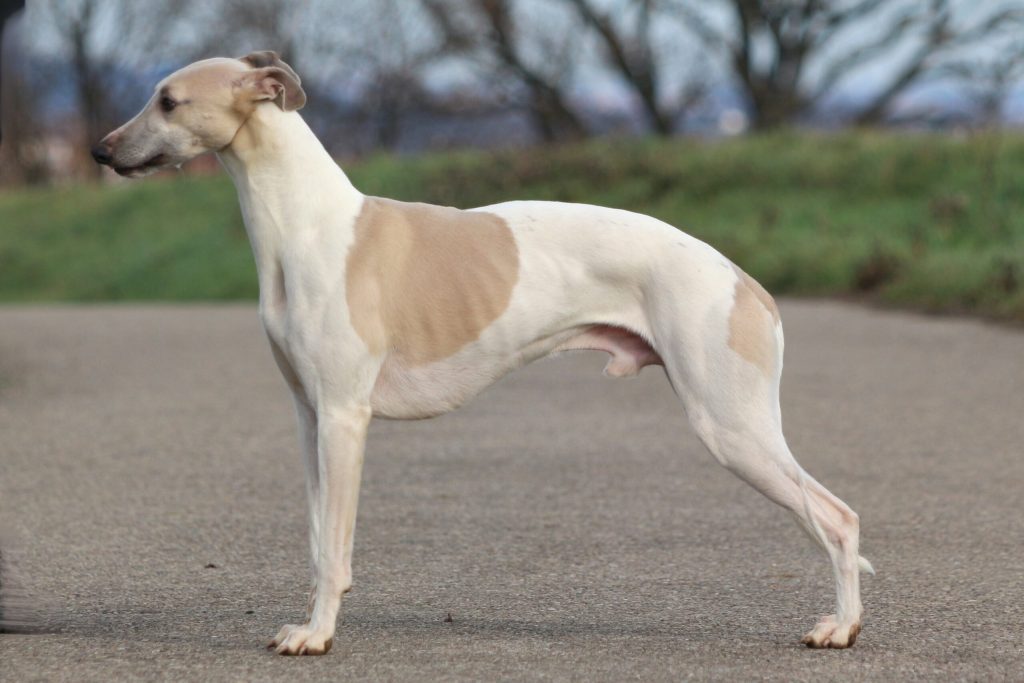
The Whippet is a breed of elegant contrast: a lightning-fast athlete who is also a serene and affectionate couch potato. Often described as a “45-mph couch potato,” the Whippet combines the grace of a greyhound with a compact, manageable size. They are the perfect blend of gentle companionship and breathtaking athleticism, making them an ideal choice for many types of homes.
This comprehensive guide will explore everything a future owner needs to know about the Whippet, from their history as the “poor man’s racehorse” to their modern-day role as a low-maintenance and loving companion.
Breed Overview
- Group: Hound
- Height: 18 – 22 inches (at the shoulder)
- Weight: 25 – 40 pounds
- Life Span: 12 – 15 years
- Coat: Short, smooth, and close-fitting. It comes in a wide variety of colors and patterns, including brindle, black, white, fawn, blue, and any combination of these.
A Brief History: The Poor Man’s Racehorse
The Whippet was developed in Northern England in the late 18th and early 19th centuries by working-class miners and tradesmen. They were created by crossing small Greyhounds with fast, sturdy terriers (likely the now-extinct English White Terrier) to produce a dog that was small enough to be kept in a cottage but fast enough to hunt rabbits and participate in rag races—a popular pastime where dogs chased a waved rag.
Their incredible speed and gentle nature earned them the nickname “the poor man’s racehorse.” They were a source of both entertainment and practical pest control. The breed was recognized by the AKC in 1888 and has since become a beloved show dog, lure courser, and family pet.
The Whippet Temperament: Gentle, Sensitive, and Swift
The Whippet’s personality is a delightful mix of quiet calm and explosive energy. They are known for their gentle and sensitive nature.
- Calm & Quiet Indoors: Inside the home, Whippets are remarkably calm, quiet, and low-key. They are famous for their love of soft beds and blankets, often burrowing under covers to stay warm.
- Affectionate & Gentle: They are deeply affectionate with their families and form strong bonds. They are typically gentle, good with children, and get along well with other dogs, especially other sighthounds.
- Sensitive & Soft-Hearted: They are sensitive souls who do not respond well to loud noises, chaos, or harsh discipline. They thrive in a peaceful, stable environment with positive reinforcement.
- Athletic & Fast Outdoors: When outside, their prey drive kicks in. They have a explosive burst of speed and a strong instinct to chase anything that moves quickly (squirrels, rabbits, small dogs).
- Reserved with Strangers: They can be somewhat aloof or shy with strangers but are not typically aggressive.
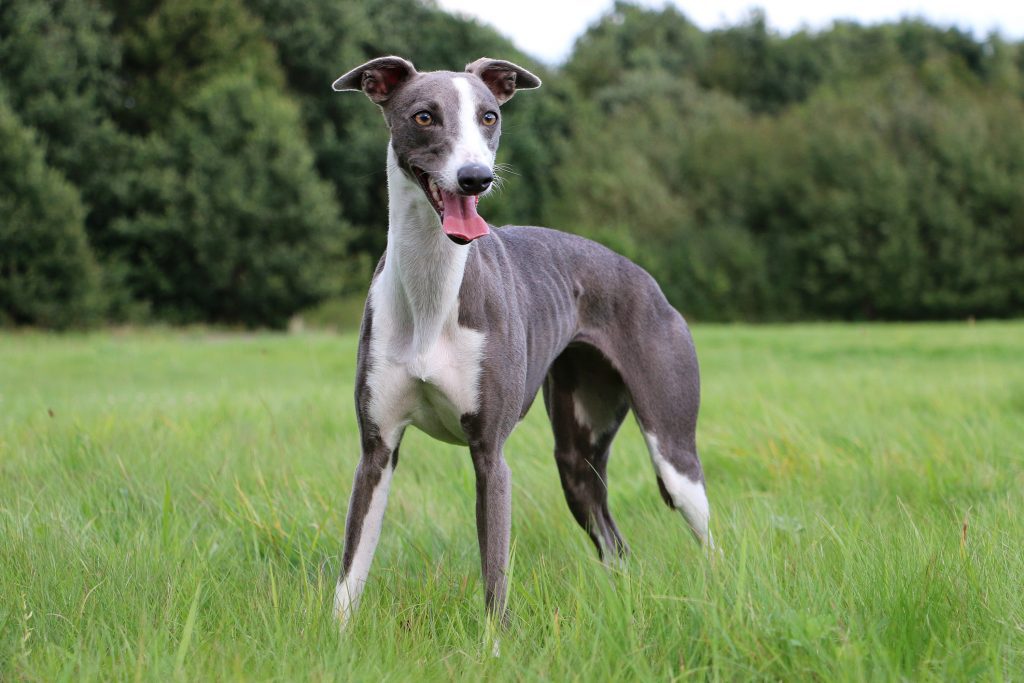
Caring for Your Whippet
Exercise: Sprint, Don’t Marathon
Whippets have unique exercise needs. They are sprinters, not endurance athletes.
- Daily Requirements:20-30 minutes of daily activity is usually sufficient. This should include:
- Safe Off-Leash Sprints: The most important exercise for a Whippet is a daily, full-out run in a securely fenced area. This allows them to satisfy their innate need for speed.
- Leashed Walks: A couple of leisurely walks each day.
- Mental Stimulation: They are intelligent but not overly demanding. They are happy with a good run and then relaxing with their family.
Grooming: Extremely Low-Maintenance
- Brushing: A quick weekly wipe-down with a grooming mitt or soft cloth is all that’s needed to remove loose hair. They are very light shedders.
- Bathing: Bathe only as needed. Their coat has little “doggy” odor.
- Other Needs: Regular nail trimming is crucial as their fast-growing nails can affect their gait. Teeth brushing and ear cleaning are also important.
Training: Gentle Guidance Works Best
Training a Whippet requires an understanding of their sensitive and sometimes independent nature.
- Start Early: Begin socialization and training as a puppy. Gently expose them to a variety of people, sounds, and experiences to build a confident adult.
- Use Positive Reinforcement: They are highly food-motivated and respond brilliantly to reward-based training with tasty treats, praise, and play. Harsh methods will cause them to shut down.
- Master Recall: A reliable recall is challenging due to their high prey drive and single-minded focus when chasing. They should never be trusted off-leash in an unsecured area. Practice recall in a safely enclosed space.
- Focus on Manners: Teach basic obedience and, importantly, a solid “leave it” command to help manage their chase instinct.
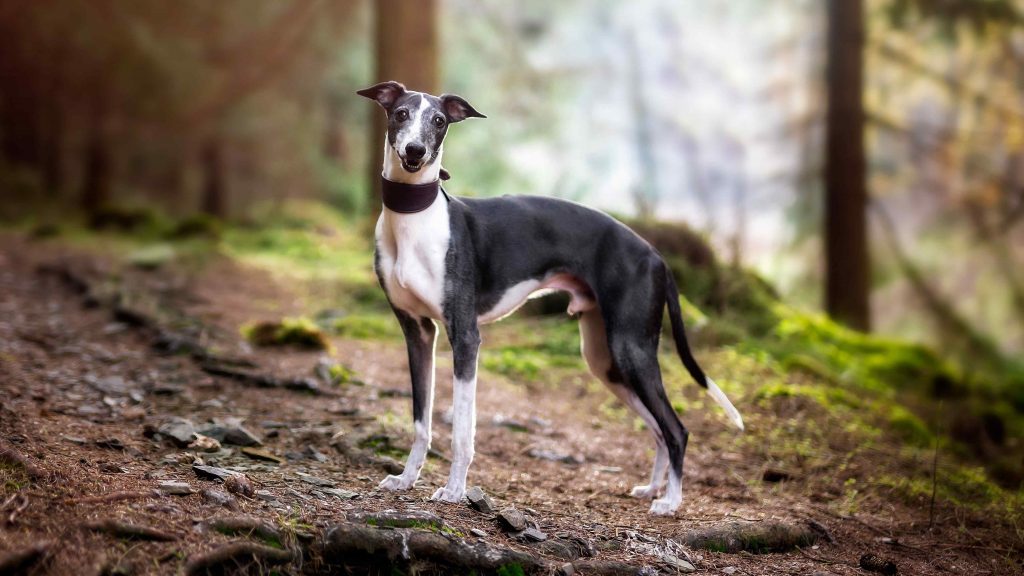
Health: What to Be Aware Of
Whippets are generally a very healthy and robust breed, but they are prone to a few specific conditions.
- Anesthesia Sensitivity: Sighthounds have a unique metabolism and can be sensitive to certain anesthetics. It is crucial to inform your veterinarian that you have a sighthound before any procedure.
- Heart Murmurs: Some Whippets can have innocent heart murmurs that cause no problems, but any murmur should be evaluated by a veterinarian.
- Eye Conditions: Such as progressive retinal atrophy (PRA).
- Skin Tears: Their thin skin and lack of body fat make them prone to cuts and tears, which may require stitches. They should wear a coat in cold weather.
Is a Whippet Right For You?
A Whippet might be your perfect match if you:
- Want a calm, quiet, and low-energy indoor companion.
- Appreciate a gentle, affectionate, and clean dog.
- Have access to a securely fenced area for daily safe running.
- Prefer a sensitive dog that responds to positive training.
- Are looking for a low-maintenance dog in terms of grooming and odor.
You might want to reconsider if you:
- Have cats or other small pets (their prey drive is very strong).
- Want a dog with reliable off-leash capabilities in open areas.
- Live in a very cold climate without providing coats for outdoor wear.
- Have a very loud or chaotic household.
- Want a dog that is immediately friendly with all strangers.
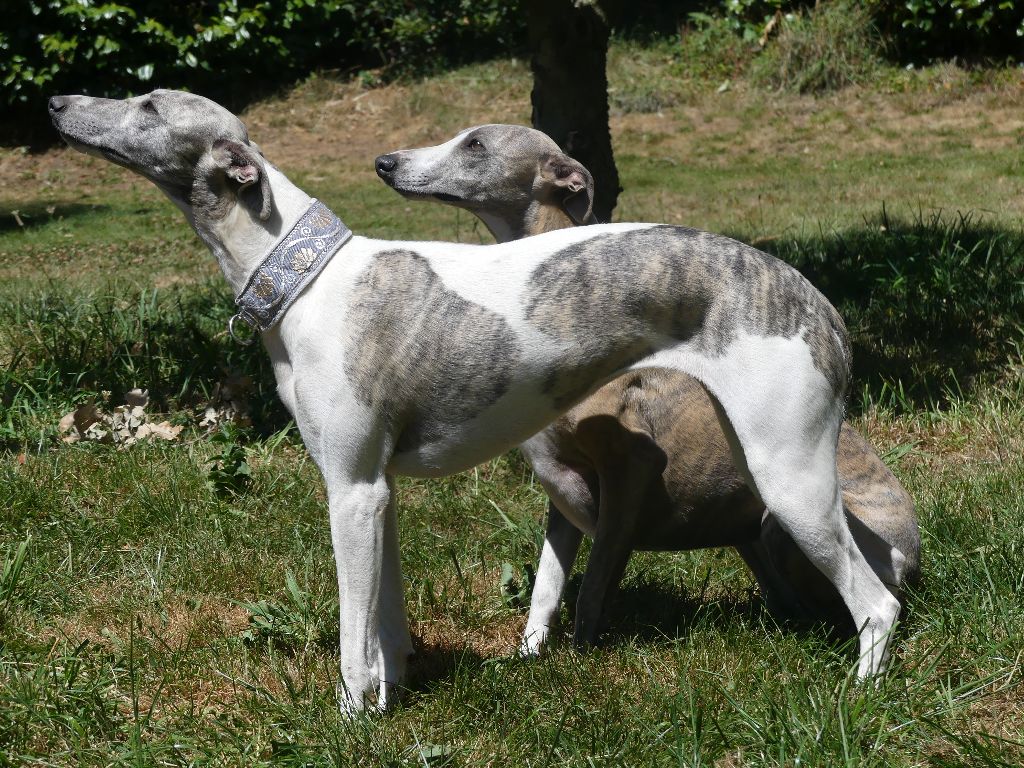
Finding Your Whippet
- Reputable Breeders: Choose a breeder who prioritizes health and temperament. They should perform recommended health tests on their breeding dogs (cardiac and eye exams) and be knowledgeable about the breed’s unique needs.
- Rescue & Shelters: Whippet and sighthound-specific rescues are common. Many dogs are surrendered due to their prey drive (often with cats) or because owners were unprepared for their need for a secure fence. Adopting an adult can be a wonderful option.
Understanding the Cost: The initial purchase price from a reputable breeder in the U.S. typically ranges from $1,500 to $2,500+. Prospective owners should also budget for high-quality food, a variety of coats for different weather, and preventative healthcare.
Bringing a Whippet into your life means welcoming a graceful, gentle, and loving companion. In return for a safe place to run and a soft spot on your couch, you will gain a devoted friend whose serene presence and joyful sprints will bring a unique peace and excitement to your home.

